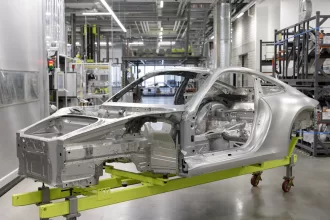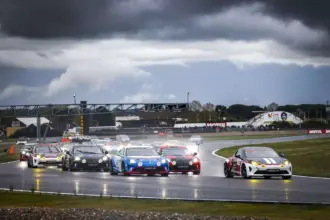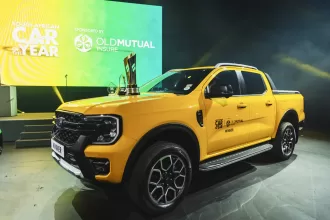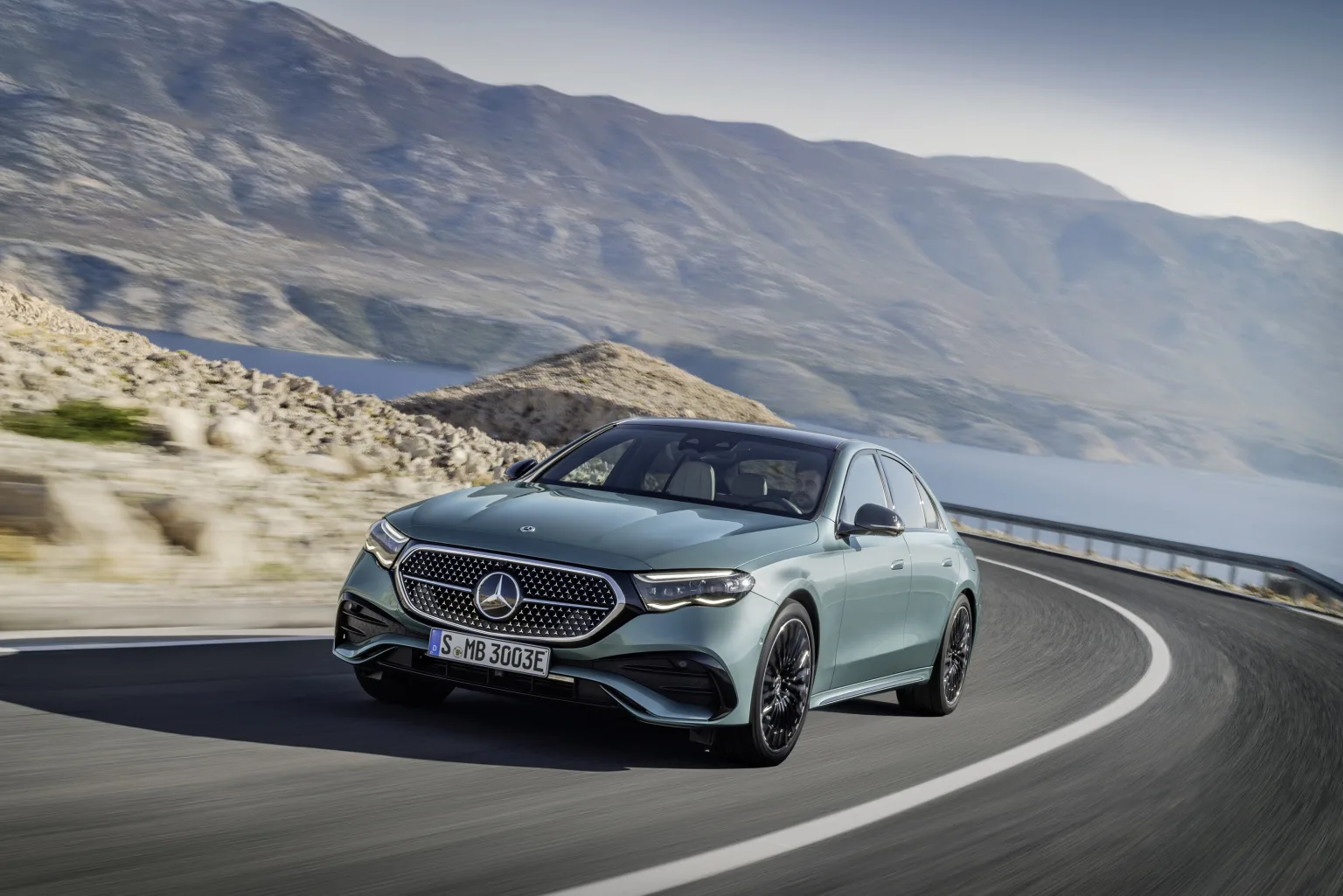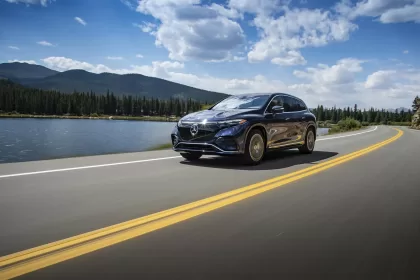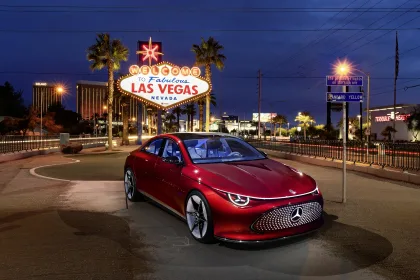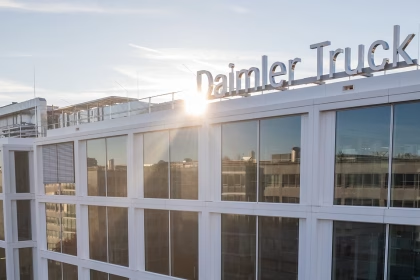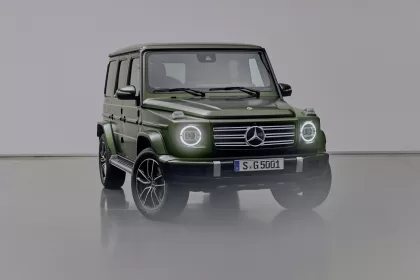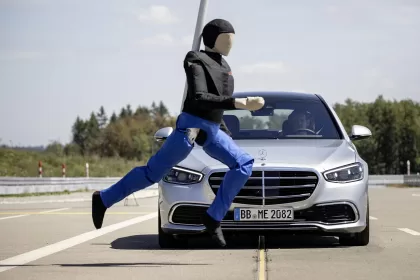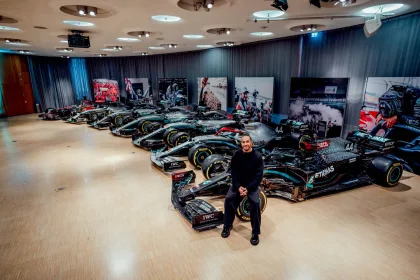- Detailed documentation of model range’s environmental impact
- Mercedes-Benz considers environmental performance from the earliest stages of new model development
- Plug-in hybrid models make up half of the E-Class range from launch
Mercedes-Benz has been publishing environmental information relating to its products since 2005. The so-called “360° environmental check” is based on a comprehensive ecological footprint for the respective vehicle and is verified by independent assessors. The latest check analyses the environmental impact of the new E-Class as represented by the E 300 e . The brochure is available here for download as a PDF file.
To show the influence of using renewable energy to charge this plug-in hybrid, Mercedes-Benz compares two possible scenarios: the driver uses electricity either from renewable sources or from the conventional EU electricity mix. In the first scenario, the CO₂ emissions over the entire lifecycle of the E 300 e are almost half of those in the second scenario. Both calculations are based on a total distance driven of 250,000 kilometres.
Since the market launch of the new E-Class, Mercedes-Benz has been offering no fewer than three fourth-generation plug-in hybrid models. With an increase in the electric range of the E 300 e to as much as 118 kilometres (WLTP), drivers can cover the majority of everyday trips without using the internal combustion engine. Based on route-guidance information from the navigation system, the intelligent operating strategy schedules the electric-drive mode for those sections of the route that make most sense. For instance, in the hybrid drive programme, the system prioritises electric drive for sections through urban areas. The operating strategy considers factors such as navigation data, topography, speed limits and traffic conditions along the entirety of the planned route.
Important milestones on the path to sustainable mobility – mild hybrids and plug-in-hybrids
All the drivetrains in the new E-Class are electrified, either as mild hybrids with 48-volt technology and integrated starter-generator or as plug-in hybrids. And, since 2022, Mercedes-Benz has been offering fully electric vehicles in all segments in which the brand is active.
Resource-conserving materials
175 components of the new E-Class with a total weight of 99 kilograms can be manufactured in part from resource-conserving materials (recycled polymers and renewable raw materials). One example of a sustainable material is MICROCUT microfibre. It consists of 45 percent recycled material and is used for a variety of interior cladding components.
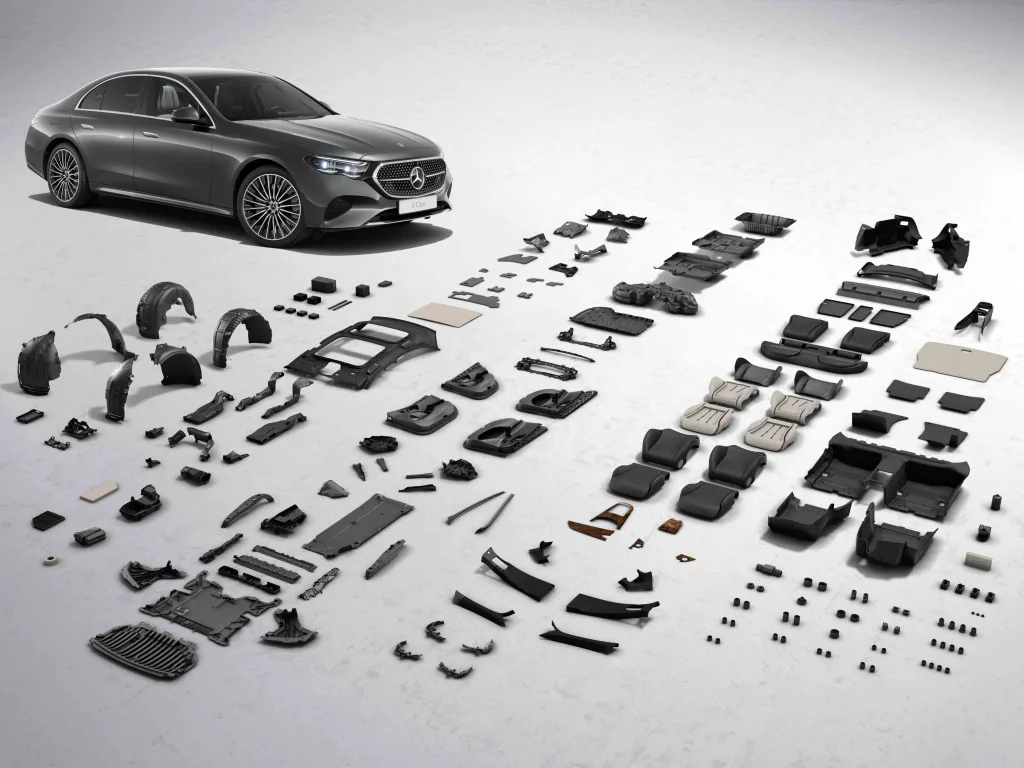
For the first time, the foam in the seats is made from recycled materials certified using the “mass balance approach”. The properties of these materials are identical to those derived from crude oil. This can reduce the need for fossil resources while maintaining the same product quality.
Ambition 2039
As a major player in the automotive sector, Mercedes-Benz AG supports the Paris Climate Accord and has made climate protection a core element of its business strategy. The ambition of the Mercedes-Benz Group is to achieve net carbon neutrality along the entire value chain in the fleet of new Mercedes-Benz vehicles by 2039 – from development to the supply chain and in-house manufacturing to the use phase and vehicle recycling.
Net carbon-neutral production
Mercedes-Benz production has been net carbon neutral at all its company-owned plants worldwide since the start of 2022. The company already covers around 45 percent of its entire energy consumption in production with electricity from renewable sources. The aim for all Mercedes-Benz production facilities worldwide by 2039 is to work 100-percent with renewable energies with zero CO₂ emissions. This also applies to the Sindelfingen plant where the E-Class is built. A long-term strategic partnership with the Dürr Group aims to set new standards in sustainability by making vehicle painting CO₂ free. Contingent upon fulfilment of all contractual conditions, the Mercedes-Benz paint shop in Sindelfingen will be equipped with the latest technologies over the next few years.
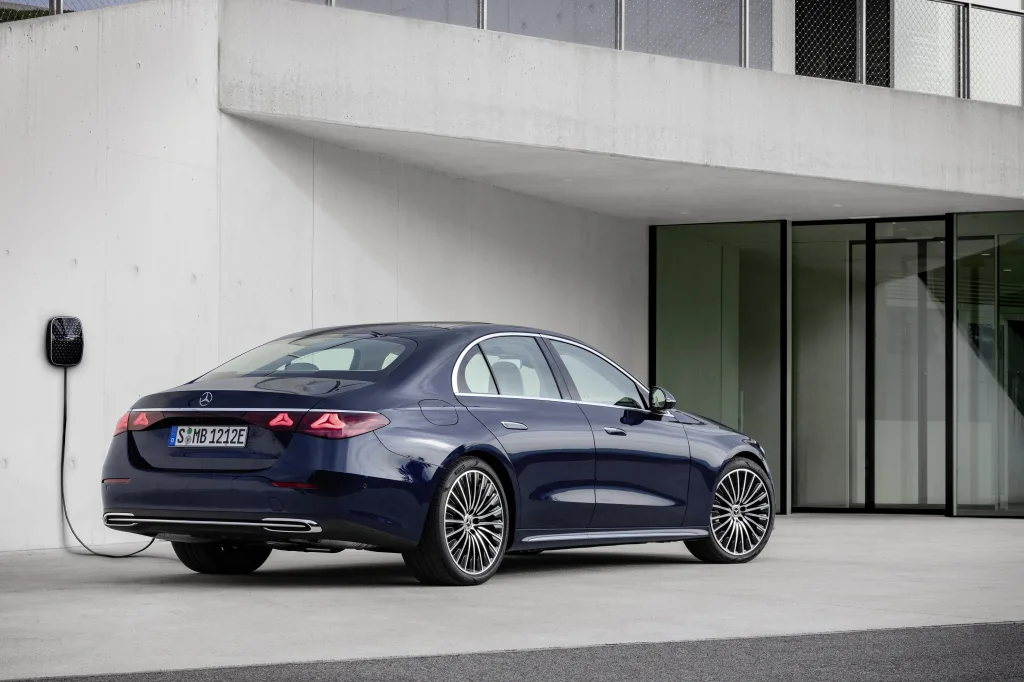
The company is striving to increase the generation of renewable energy at its factories. Initiatives for 2024 include investment in a further expansion of photovoltaics at the Sindelfingen plant. This location is also committed to continually reducing its waste generation and water consumption. Find further information here.
Decarbonising the supplier network
Mercedes-Benz is addressing carbon emissions in its supply chain through its Ambition Letter. This means,
the company only permits suppliers to tender for new contracts once they have confirmed in writing that they will supply Mercedes-Benz with net carbon-neutral products by 2039 at the latest – in line with the company’s own climate targets. Only once the Ambition Letter has been signed do suppliers have the opportunity to be selected for the contract. This triggers the reduction of carbon emissions among direct suppliers and along the supply chain, driving progress in accord with Ambition 2039 and Mercedes-Benz targets. Since 2020, Mercedes-Benz has been measuring how many suppliers sign up to the letter of intent. In 2023, suppliers accounting for 84 percent of Mercedes-Benz’s annual purchasing volume signed the Ambition Letter. A tracking system monitors the reduction of emissions over time.
Circular economy in battery systems
In keeping with its holistic approach, Mercedes-Benz also considers the circular economy in the development of battery technology. In March 2023 at the Kuppenheim plant, the company laid the symbolic foundation stone for a battery recycling factory based on hydrometallurgy. Contingent upon discussions with public authorities, it will cover all the relevant steps. The innovative process should enable a recycling quota of more than 96 percent. On the basis of this technology, the company plans to work with high-tech companies to establish a circular materials economy for battery recycling in China and the USA.
For plug-in hybrids – green charging on-the-road
Since 2021, Mercedes me Charge enables its customers to charge with green electricity at public charging stations in Europe, the USA and Canada. The Mercedes me Charge network is one of the world’s biggest, with more than 1.5 million charging points – around 600,000 of those in Europe. And it continues to grow. Green charging uses green-electricity certificates to ensure that if electricity from renewable energies is not yet available for charging sessions via Mercedes me Charge, an equivalent amount of electricity from renewable energies is fed into the grid.
Find further information on these topics in the Mercedes-Benz Group AG Sustainability Report.

